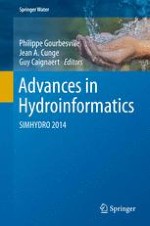2016 | OriginalPaper | Buchkapitel
One-Dimensional Model for Sediment Transport: An Application to the Design of Silt Basins
verfasst von : Álvaro A. Aldama, Adalberto Vaca, Dunia González-Zeas, Xavier Coello-Rubio, Gustavo Luzuriaga
Erschienen in: Advances in Hydroinformatics
Verlag: Springer Singapore
Aktivieren Sie unsere intelligente Suche, um passende Fachinhalte oder Patente zu finden.
Wählen Sie Textabschnitte aus um mit Künstlicher Intelligenz passenden Patente zu finden. powered by
Markieren Sie Textabschnitte, um KI-gestützt weitere passende Inhalte zu finden. powered by
